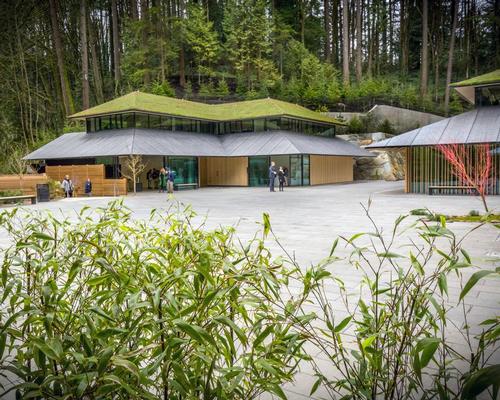24 Apr 2017
Kengo Kuma's Cultural Village for Portland's Japanese Garden opens to the public
BY Kim Megson

Kengo Kuma’s US$33.5m US$33.5m (€31.3m, £26.2m) expansion of Portland’s Japanese Garden, celebrated as one of the most authentic of its kind gardens outside Japan, has opened to the public.
The project, Kuma’s first public commission in the US, has seen the creation of a new Cultural Village that provides additional space to accommodate the attraction’s rapid visitor growth and immerses visitors in traditional Japanese arts and culture.
To honor the singular experience of each visitor “and ensure the serenity is protected for future generations”, Kuma followed his trademark design principles of continuity between nature, natural materials, and Japanese tradition.
In collaboration with the Garden’s curator, third generation master garden craftsman Sadafumi Uchiyama, he reused and optimised existing land to add 3.4 acres of usable space to the 9.1 acre property.
The Village emulates Japan’s ‘monzenmachi’, the gate-front towns that surround sacred shrines and temples, using a combination of locally sourced materials and Japanese craftsmanship.
Many of the new structures feature living roofs, which absorbs rainwater and prevent water run-off and evoke the thatched roofs of fishing huts from centuries ago in Japan.
Meanwhile, a medieval-style Castle Wall has been recreated at the west end of the Village by 15th-generation Japanese master stonemason Suminori Awata using 800 tons of local granite.
A new courtyard for seasonal activities, performances and demonstrations is surrounded by several new LEED-certified structures, including an intimate cedar Umami Café, that frame the wider Garden.
“Given its proximity to nature, Portland is unlike any place in the world,” said Kuma. “This new Cultural Village serves as a connector of the stunning Oregon landscape, Japanese arts and a subtle gradation to architecture.
“Working with the Garden has influenced my approach to future projects, especially integrating green and wood. For example, the National Stadium in Tokyo will be rich in vegetation, evoking a feeling of forest in the city.”
Steve Bloom, chief executive officer for the attraction, added: “In this increasingly plugged-in, distracted world, we find many of our guests seek out the peace and respite they find within the Garden. With this new Cultural Village, we will extend the Garden’s legacy and purpose, providing a heightened sense of tranquility, a more robust educational experience and preservation of significant cultural traditions and art forms.”
Kuma’s other new facilities for the Garden include:
• The Jordan Schnitzer Japanese Arts Learning Center is home to new gallery spaces, a multi-purpose classroom, the Garden gift store and the Vollum Library, a comprehensive resource on Japanese gardening and related arts
• A new Garden House, where an expanded offering of horticulture workshops will take place.
There are also three new gardens designed to demonstrate a wider array of Japanese garden styles and techniques, including:
• The Entry Garden with cascading ponds and a water terrace at the entry in Washington Park
• Tsubo-Niwa (small vignette garden) in the Tateuchi Courtyard
• Ellie M. Hill Bonsai Terrace
• The Bill de Weese Chabana Research Garden, which will grow flowers for tea ceremony and host demonstrations, furthering the Garden’s education focus.
Portland Japanese Garden was created in the late 1950s on the site of the old zoo after then mayor Terry Schrunk and members of the Portland community were inspired by the growing cultural ties between Oregon and Japan. The concept was “to create a garden of great beauty and serenity, while forging a healing connection to Japan on the heels of World War II.”
Close Window